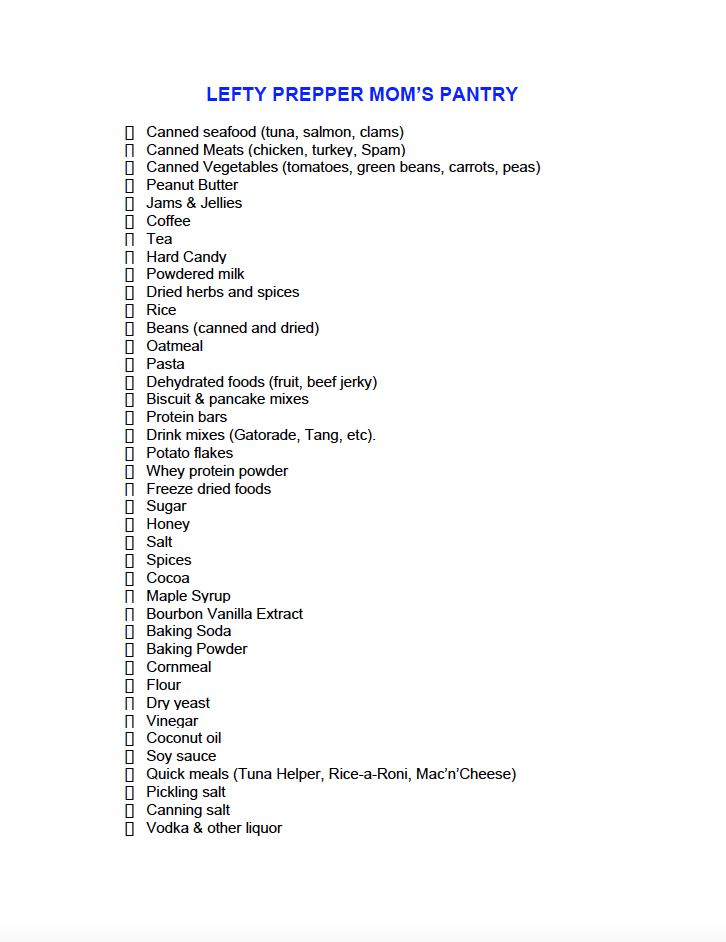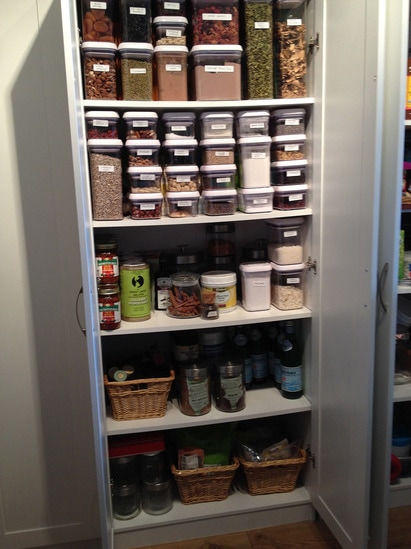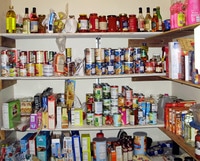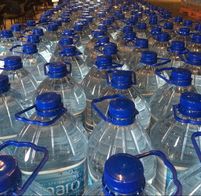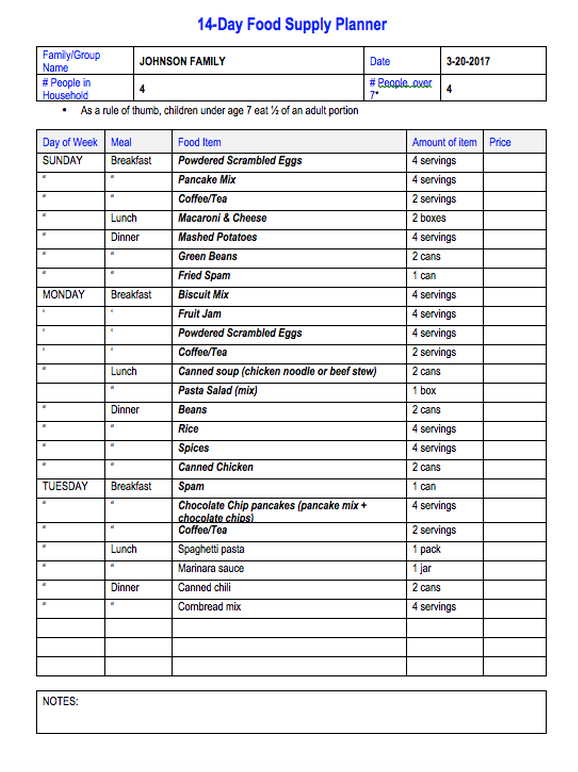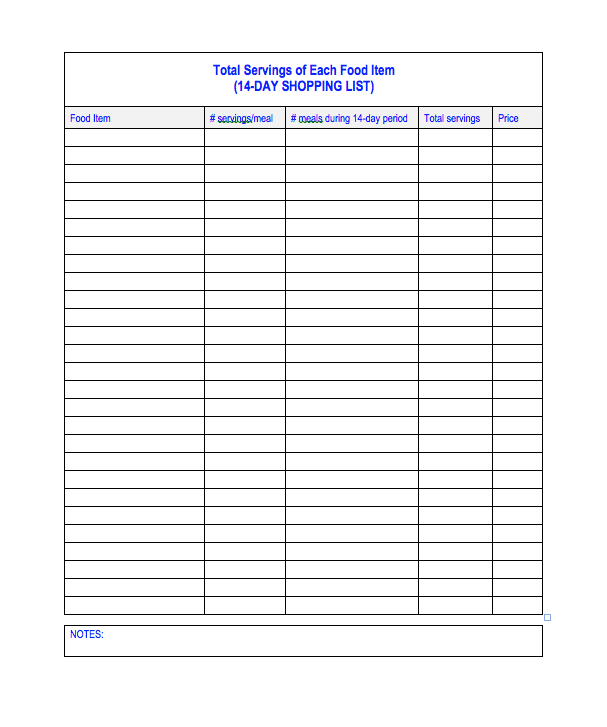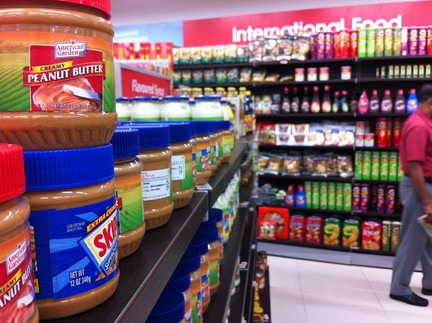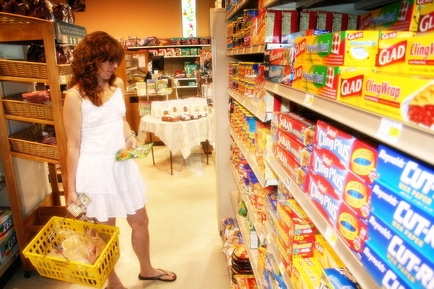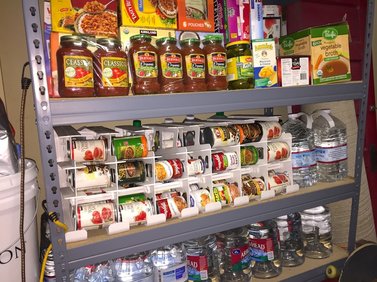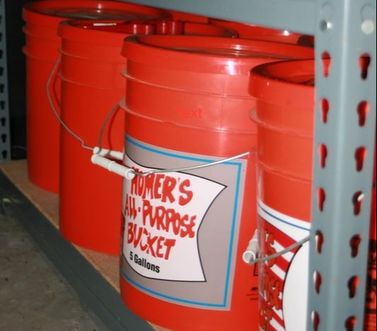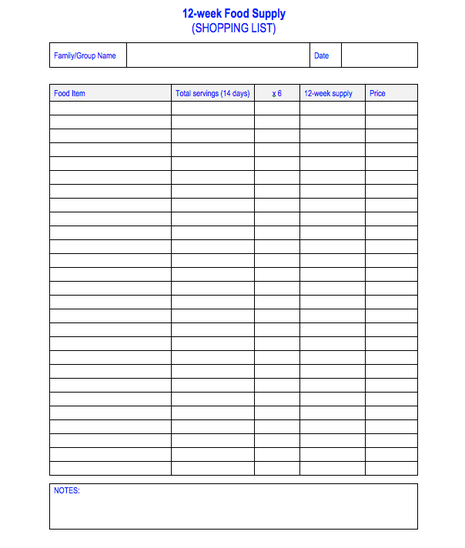STOCKING UP: BUILDING UP YOUR
EMERGENCY FOOD SUPPLY
EMERGENCY FOOD SUPPLY
1) THE BASICS:
- Think about foods that you and your family enjoy.
- Now, think about foods that don't require refrigeration. The list will narrow! In a disaster situation, ice will be nowhere to be found, which means our stored emergency food supply needs to be non-perishable (aside from the fresh fruits & veggies you'll hopefully have growing in your garden!)
- Here's a general list of foods recommended to have on hand. Feel free to print it up and think of alternatives:
- Think about foods that you and your family enjoy.
- Now, think about foods that don't require refrigeration. The list will narrow! In a disaster situation, ice will be nowhere to be found, which means our stored emergency food supply needs to be non-perishable (aside from the fresh fruits & veggies you'll hopefully have growing in your garden!)
- Here's a general list of foods recommended to have on hand. Feel free to print it up and think of alternatives:
2) GOAL #1: ENOUGH FOOD FOR 14 DAYS
First, eat the food in the refrigerator:
- If you're like us, that's mostly condiments, vegetables, old take-out and cold drinks. So we'll quickly
move on to...
Next, eat the food in the freezer:
- Yum. Eat up those leftovers that your mother-in-law so thoughtfully stuffed in there for you.
- Conserve the cold -- make a quick inventory of what's in there and tape it to the freezer, then cross
things off as you use them up.
- This food should be good for at least 2-3 days, but, when in doubt, throw it out!
Then, move on to the long-term non-perishable food and staples (in the pantry, etc).
- A handy option is to purchase a 2-week supply of freeze-dried foods from a company like Mountain
House, which makes really rather delicious freeze-dried food. They don't pay me to say that. I just like
their food.
Let's think about how much food would you and your family eat in a week, or in two weeks. To make it easier, think about what you'd eat if you were backpacking/camping, or being frugal and not going out to eat. And imagine that you cannot use a refrigerator to store any of it:
- What will you eat for breakfast, most days?
- How about lunch?
- And dinner?
- And snacks?
- And for an occasional dessert?
- What would you want to drink besides water?
Most families repeat their recipes several times each month, so this gets easier. Here's a printable spreadsheet you can use to make your planning easier. It's a 14-day planner because, honestly, it's easier to come up with 14 days worth of meals, then repeat. I've filled it out with some example meals, but of course you'll have to think about what YOUR family would actually want to eat. There are some websites that tell you exactly what food to buy to build up your food supply, but only YOU know what you and your family will actually eat. If you buy a bunch of tuna and everyone hates fish....Right? So, take the time to print out a blank food supply and menu planner by clicking the link to the right, and figure out what makes sense for you.
Now that you know what you're eating, it's time to figure out your 14-day shopping list!
3) GOAL #2: A 12-WEEK FOOD SUPPLY
The ultimate goal is to have a 12 month supply of food stored up in your home, but let's start with 12 weeks, because that is way more than what most people have at home.
It sounds like a lot of food, and it is.
Let's start out with figuring out what you need, then we'll discuss the question of where will it all go?
Once you know what you need for 14 days, it's pretty easy to figure out how much you need for 12 weeks:
14 day supply x 6 weeks = 12 week (almost 3-month) supply
Below is a printable list to use along with your 14-day supply list (above) to calculate your 12-week food supply.
This will obviously be a long list, and expensive. Take it slow -- unless you've got a big budget, wait for sales, get things in bulk, and build up your stores gradually.
Once you have 12 weeks of food stored up, stop for a moment and let's congratulate you for being awesome!!
Isn't it a great feeling - you are pretty darn prepared! WAY better than you were before, at least.
Take a moment and smell the roses!
THEN - start doing it all again in your quest to save up a 12 month's supply of food.
And when you succeed -- please let me know! That's a major achievement!
